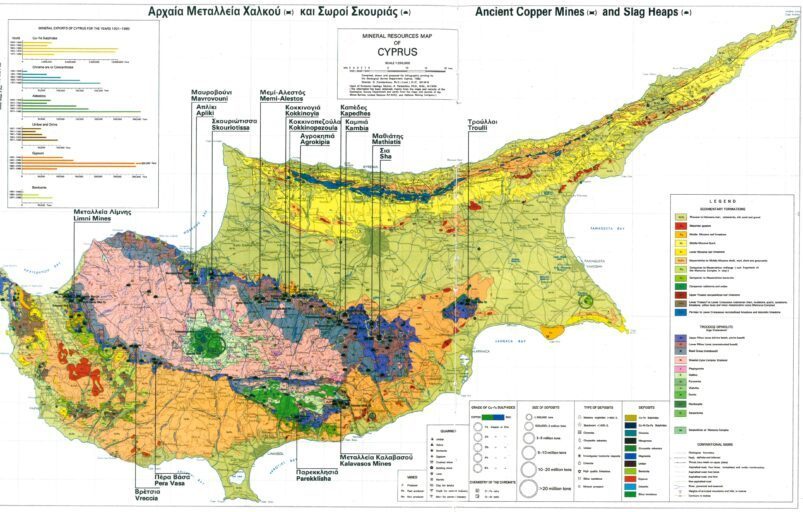World Heritage Sites are considered as important monuments, where the culture of a country is reflected. Monuments are considered historic buildings, churches, walled cities, rural villages etc. But what about mines? The island of Cyprus has a long history of mining that goes back to the ancient times and expands until today. Mining in the 20th century has left behind its footprint with opencast pits around the Troodos Mountain foothills (Figure 1). Most of these mines have not been restored yet, except of the Amiantos Mine. Each mine has its own history and reflects the long-term importance of their protection for the preservation of the historicity of the island of copper.
Send to us by: Thea Christoforou.
After the economic crisis of 2013 that took place in Cyprus, a huge interest in gold extraction occurred by mining companies on the island. The 20th century abandoned mines seemed to be valuable, especially the ones that still bear a significant number of mineral resources.
Strongylos mine, at the village of Mathiatis (Nicosia district) was the first mine to attract the interest of a local mining company, “Hellenic Copper Mines LTD” (Figure 2). In 2017, the mining company submitted an EIA (Environmental Impact Assessment) for the permission to extract gold and other minerals at the mine, by removing old waste dump of the 1930’s as well as extracting deeper at the opencast pit. That is when a local Initiative, entitled as “Historical and Environmental Protection Group of Mathiatis” was founded to prevent this mining project to take place.
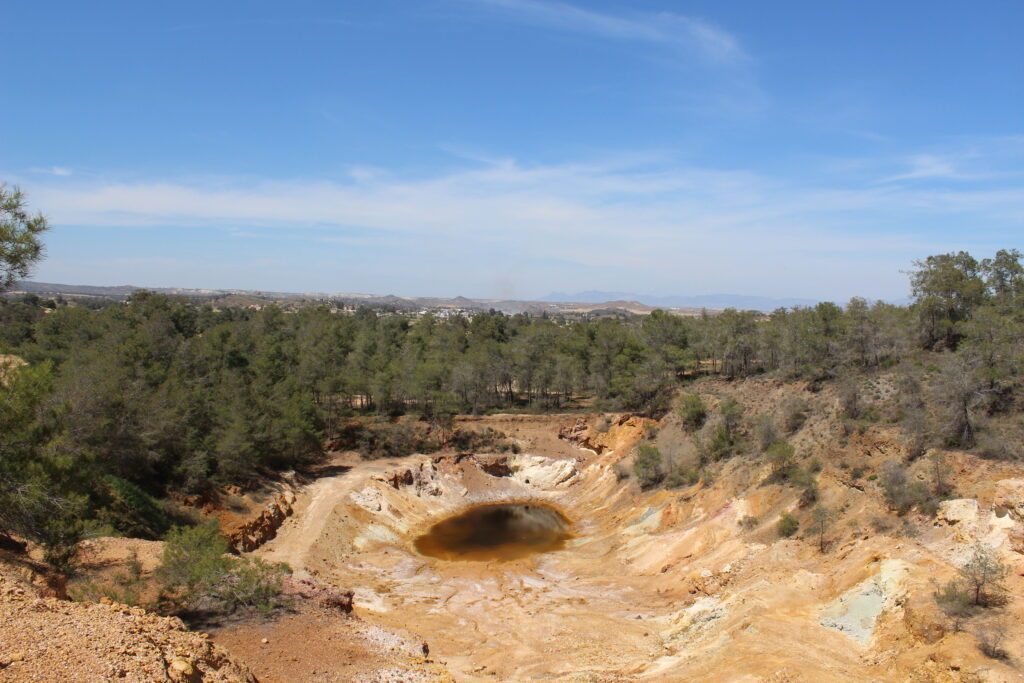
mathiatis.hep@gmail.com
The case of Strongylos was perplexing, not only due to the governmental development policy, that underlined the mining company’s endeavors, but also due to the support of investors seeking financial benefits from the exploitation of the mine. Through numerous discussions with the Governmental Departments and at the Parliament, as well as with the submission of letters, the members of the Initiative tried to stop the mining company (Figure 3). The first application of the company was declined, which gave the Initiative an important asset for the future. The company applied again for a second time, using environmental restoration as the excuse to gain access to the mine of Strongylos (Figure 4). This again would have been an issue, since the usual practice by companies in general, is to gain the permission and then alternate it to get more access at the site. This time the company got the permission for removing only the waste dumps, with no further extracting. Of course, the removal of the waste dumps caused further environmental problems. After the waste dumps were removed, the company was obligated to restore the area by planting trees.
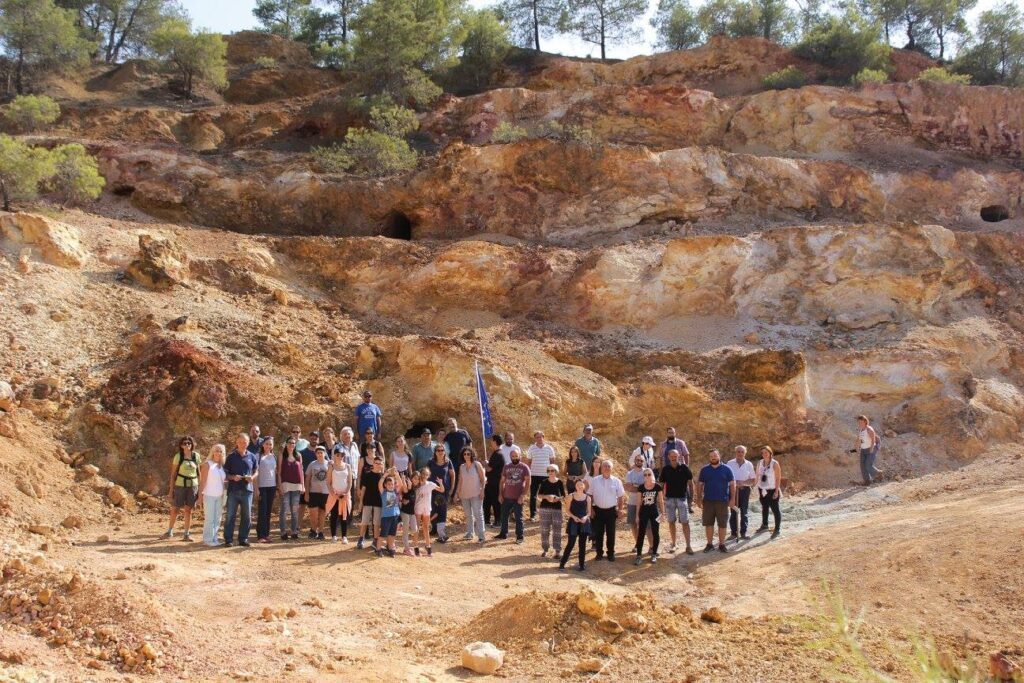
Even though the case is considered closed, the threat is still imminent. A recent SEA (Strategic Environmental Assessment) by the Ministry of Agriculture was submitted in December 2020, where a full plan of restoration of the abandoned mines of the island was presented. Amongst the different issues discussed, a section is given to explain that there are still mineral resources that could be exploited, and Strongylos mine is included in that list.
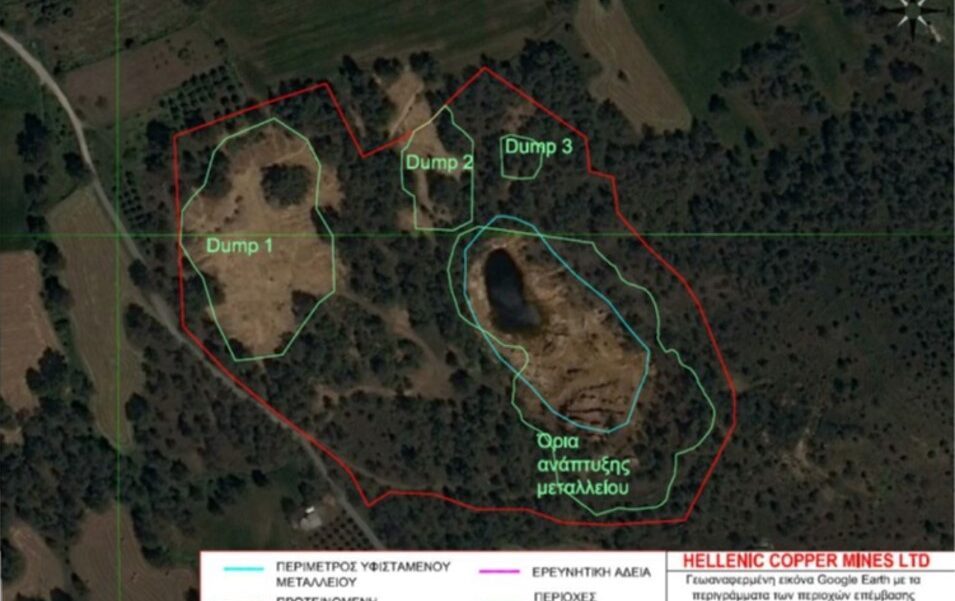
At this point, it is important to highlight the fact that South Mathiatis Mine is a candidate UNESCO monument since 2002, in the Mixed Category of Natural and Cultural Landscape. As the official website of UNESCO quotes: “This site has to be considered as part of the Troodos ophiolite, a 90-million-year-old fragment of extremely well-preserved oceanic crust. This is an excellent example of a Cyprus type volcanogenic massive sulphide deposit where the upper oxidised part has not been destroyed. Ancient (Roman) galleries and adits are preserved in the walls of the open pit as are the various “ochres” of the gossan zone.”. It is the only mine that holds such title, and it is the second monument in Cyprus in this category. It is of high importance to question ourselves whether the exploitation of mineral resources is of a such essence to further endanger this monument of cultural and natural heritage. Apart from the above, the Mine still bears a lot of archaeological evidence that waits to be researched and studied. The site itself has been almost environmentally restored and due to the absence of human factor, the flora and fauna re-emerged to a point of a considerable environmental value. Endangered species of bats, protected by the European Law, inhabited the abandoned shafts-galleries of the mine (Figure 5).
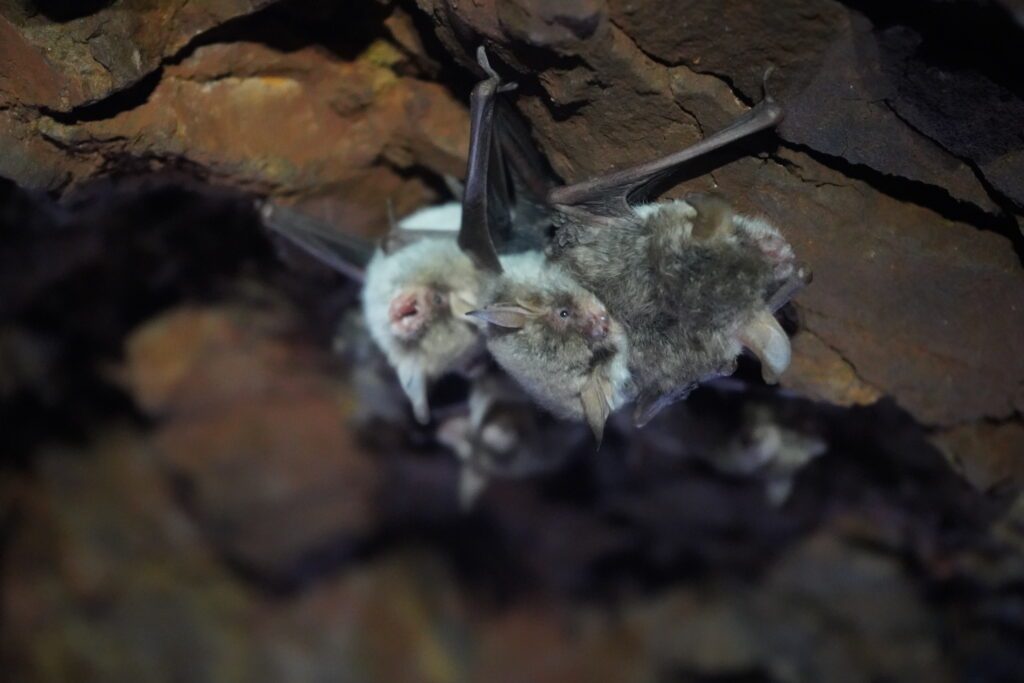
Considerably, someone could ask himself/herself, why a such important monument has not been official declared as an UNESCO monument, a question that should be addressed to Governmental Departments. A more intriguing question is why a European Government values a monument solely only on its possible financial exploitation and not on its evident current environmental and cultural character?
The “Historical and Environmental Protection Group of Mathiatis” Initiative has suggested from the beginning that a site like Strongylos mine should be transformed in an open-air museum where someone can witness nature (geology, flora, fauna) and culture (archaeology, history) (Figure 6). The area has already been included in the “Cyprus Copper Itinerary” Self-drive route of the Deputy Ministry of Tourism, together with other mines at the area. Different universities and institutions from all over the world visit Cyprus to research and explore the abandoned mines. The candidacy of UNESCO should be considered a great opportunity for Cyprus Government to follow a sustainable plan for Strongylos mine.
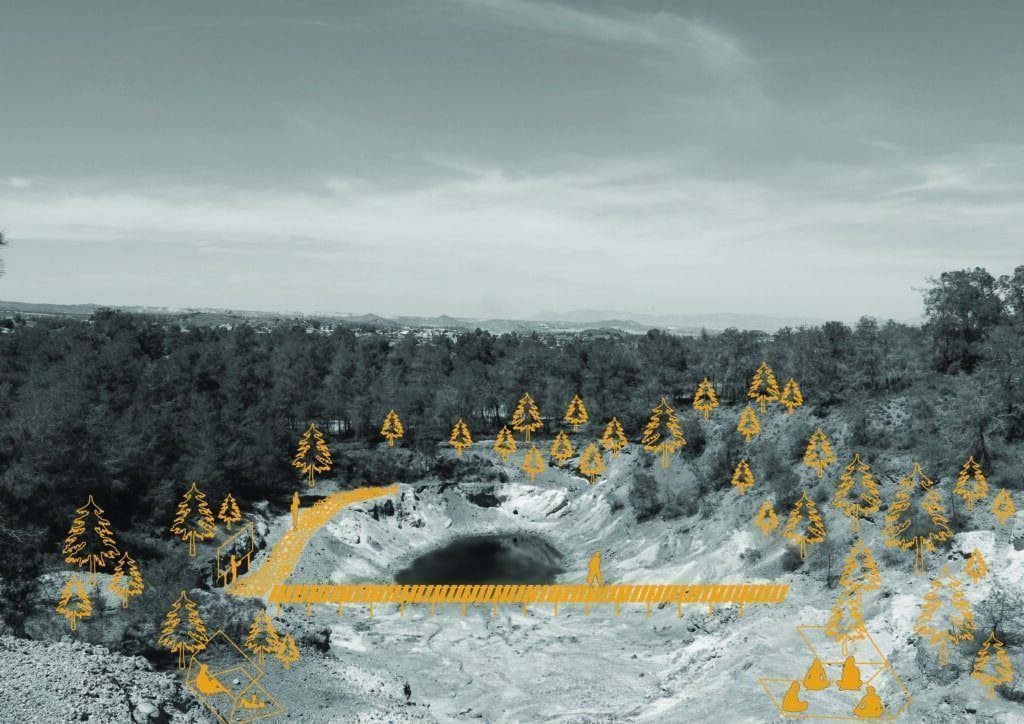
In conclusion, Cyprus’ mines are as important monuments as other sites. Their environmental restoration and cultural promotion could be of a great asset to the Cypriot Government, financially and culturally. The long history of the island of mineral resources exploitation can follow a different direction towards to a sustainable development, rather the one of environmental and cultural destruction.
About the author

Thea Christoforou is an archaeologist and activist from Cyprus. Currently, she is a PhD Candidate in Archaeology at the University of Cyprus. She has worked professionally and voluntary in different NGO’s, working on the promotion and protection of the Natural and Cultural Heritage of Cyprus (Almyras-Cultural & Environmental Workshop, Historical & Environmental Protection Group of Mathiatis, Association of Cypriot Archaeologists).
References
- http://www.amiandos.eu/el/
- http://hcm.com.cy/site/
- https://www.facebook.com/historicalandenvironmentalgroupmathiatis
- https://cyprus-mail.com/2017/04/21/new-life-ancient-mathiatis-mine
- https://cyprus-mail.com/2018/08/04/mathiatis-groups-slam-mining-companys-trojan-horse-plan-to-extract-gold/
- Κυπριακή Δημοκρατία – Υπουργείο Γεωργίας, Αγροτικής Ανάπτυξης και Περιβάλλοντος – Τμήμα Γεωλογικής Επισκόπησης. Δεκέμβριος 2020. Στρατηγική Μελέτη Περιβαλλοντικών Επιπτώσεων του Σχεδίου Δράσης Εγκαταλελειμμένων Μεταλλείων της Κύπρου (Αρχική Μελέτη. I.A.CO. Environmental & Water Consultants http://www.moa.gov.cy/moa/environment/environmentnew.nsf/All/714E948AC0AB8767C225864600261B4E/$file/M20200501.pdf?OpenElement
- https://whc.unesco.org/en/tentativelists/1674/
- https://www.visitcyprus.com/index.php/en/discovercyprus/rural/cultural-routes/item/655-copper-cultural-route

